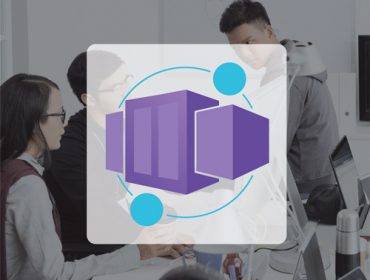Core Steps to Success with Containerisation
- Peter St Clair
- July 3, 2024
- Insights
Embarking on a migration journey, whether it’s to modernise applications or enhance operational efficiency, requires careful planning and strategic execution. Regardless of where you currently stand in your migration process, certain core steps can pave the way for success. Let’s delve into these essential stages that can guide you towards achieving your desired outcomes.
Define the Migration Objectives
At the heart of any migration endeavour lies a clear understanding of the ‘why’ behind the move. It’s not merely about relocating applications; it’s about aligning technology with business goals. Defining clear migration objectives is crucial as they set the direction for the entire journey. Whether it’s about cost savings, improved agility, embracing new features, or enhancing overall efficiency, having well-defined objectives is paramount.
Inventory Review and Assess the Legacy System
Before diving into transformation, it’s essential to comprehend the existing landscape. Conducting a comprehensive inventory review involves cataloguing every component of the legacy system – applications, databases, interfaces, and integrations. Additionally, assessing their performance, code quality, and business functions is pivotal. This step provides valuable insights into the extent of necessary changes and informs subsequent decisions.
Choose the Right Migration Strategy
There’s no one-size-fits-all strategy when it comes to migration with containers. The optimal path forward could involve various approaches, such as rehosting, replatforming, refactoring, or even retiring or retaining systems. The choice of strategy depends on factors such as system quality, alignment with future needs, technological aspects, and resource constraints. Selecting the right migration strategy is crucial for ensuring a smooth and successful transition.
Assessing Containerisation as a Foundational Pillar
Through these three fundamental steps, you can evaluate whether containerisation should stand as a foundational pillar of your migration strategy. Containerisation offers numerous benefits, including enhanced portability, scalability, and resource efficiency. By encapsulating applications and their dependencies into containers, organisations can streamline deployment processes and improve overall agility.
Continuously Assessing the Right Solution
The journey towards migration and modernisation is not a one-time event but an ongoing process. As technologies evolve and business requirements change, it’s essential to continuously assess the suitability of containerisation and other solutions for your evolving needs. Stay agile and adaptable and be prepared to adjust your strategies accordingly to maximise the value of your migration efforts.
In Conclusion
Successful migration with containerisation requires careful planning, thorough assessment, and strategic decision-making. By defining clear objectives, conducting a comprehensive inventory review, choosing the right migration strategy, and continuously reassessing your approach, you can navigate your migration journey with confidence and achieve your desired outcomes. View our Containerisation service offerings.
 Lifting the Lid on Containerisation
Lifting the Lid on Containerisation
Our Principal Consultants have put together this whitepaper to show how, by adopting the right containerisation solution and implementing it correctly, businesses can accelerate innovation, improve agility and gain a competitive edge in today’s rapidly evolving digital landscape









